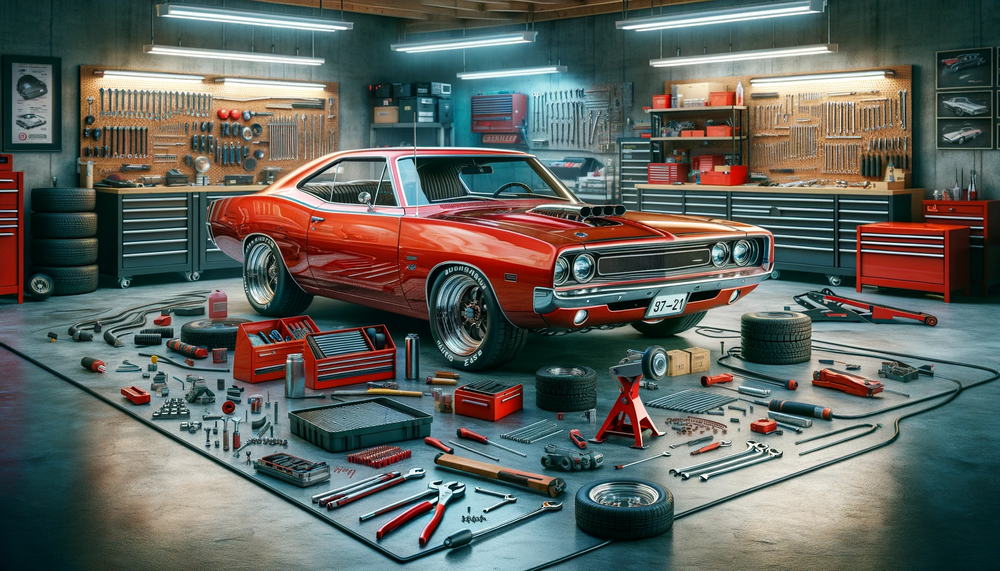Reducing Noise in Your RV: Sound Deadening Solutions for a Restful Road Trip
Hitting the open road for an adventure in your RV or camper is an experience like no other. The freedom to travel, explore, and spend the night in your home on wheels is both exciting and liberating. But like any mode of transportation, RVs and campers are prone to noise disruptions from various sources, such as road noise, wind, and engine vibrations. These disturbances can detract from the tranquility of your journey, making it difficult to relax, converse, or even sleep in your mobile abode.
Thankfully, there's a solution: Sound deadening techniques and materials specifically designed for RVs and campers can dramatically reduce noise infiltration and create a serene and peaceful environment while on the road. In this comprehensive guide, we'll discuss various types of sound deadening materials, their benefits, and installation techniques to help you achieve optimal noise reduction in your mobile home-away-from-home.
From discovering the most effective materials for walls, floors, and ceilings to exploring the benefits of proper insulation, we'll cover everything you need to know about reducing noise levels in your RV or camper. Besides, we'll share valuable insights into maintaining and maximizing the longevity of your soundproofing system so you can enjoy a peaceful road trip experience for years to come.
Embarking on this journey, you'll acquire the knowledge and resources needed to transform your RV or camper into a quiet, relaxing sanctuary on wheels. With the right sound deadening techniques, materials, and strategies, you can create the ideal environment to unwind, recharge, and cherish the precious moments of your road trip adventure.
Explore our premium collection of sound deadening materials and start your journey to a quieter RV or camper experience today!
Identifying Noise Sources in Your RV or Camper
To effectively tackle noise issues, it's essential to pinpoint the primary sources of noise infiltrating your RV or camper. Each source may require a different sound deadening approach or material. Common noise sources include:
- Road noise: Tires rolling against the pavement create noise that can travel through your RV or camper's structure.
- Wind noise: As you drive, wind can whip around your vehicle and create noise, especially around gaps or openings.
- Engine vibrations: The engine's vibrations can transmit throughout the RV or camper, causing structural panels to vibrate and generate noise.
- Appliances and systems: Air conditioning units, fans, and other appliances may produce noise that interrupts the peaceful atmosphere inside your RV or camper.
Understanding the noise sources will help you develop a targeted approach to sound deadening that addresses each issue effectively.
Tips for Installing Sound Deadening Materials in Your RV or Camper
Proper installation is crucial for maximum sound reduction. Here are some tips to ensure a successful installation:
- Plan your approach: Assess the primary noise sources, determine the appropriate materials for each issue, and create a plan for installation in your RV or camper.
- Prep the surfaces: Clean and degrease all surfaces before applying any materials. This will ensure the best possible adhesion and effectiveness.
- Measure and cut accurately: Measure the areas where you're applying the sound deadening materials and cut them to fit precisely. Remember to account for irregular surfaces and curves.
- Seal gaps and edges: After installation, seal any gaps or edges to ensure complete soundproofing coverage.
Maintaining Your RV's Sound Deadening System
Taking care of your RV's sound deadening system ensures that it remains effective for years. Here are some tips to maintain and protect your soundproofing investment:
- Inspect regularly: Regularly check your sound deadening materials for any signs of wear or damage, such as peeling, cracks, or gaps.
- Repair as needed: If you notice any issues, address them promptly to keep your sound deadening system functioning optimally.
- Clean gently: Clean sound absorbing foam and other visible materials gently, using water and mild detergent if necessary. Avoid aggressive cleaning agents or abrasive tools that can damage your soundproofing materials.
Additional Strategies for a Quieter RV Experience
Besides sound deadening materials, there are other ways to minimize noise in your RV or camper. Here are some additional strategies to consider:
1. Seal Gaps and Openings
Check weatherstripping, window seals, and door seals to ensure they're in good condition. Replace or repair any damaged seals to prevent wind noise from entering your RV or camper.
2. Inspect and Service Appliances
Regularly inspect and service your appliances, such as air conditioning and fans, to keep them operating quietly. Proper maintenance can significantly reduce appliance noise.
3. Choose Quiet Campsites
When selecting a campsite, consider the surrounding environment and potential noise sources, such as busy roads or nearby playgrounds. Opt for quieter, more remote locations to create a peaceful camping experience.
Conclusion
Achieving a quiet and serene environment in your RV or camper is possible with the right sound deadening materials and techniques. By understanding the noise sources, selecting the appropriate materials, and following best practices for installation and maintenance, you can transform your RV or camper into a peaceful haven on wheels. With a quieter mobile abode, you'll enjoy a more restful and relaxed road trip experience as you explore the open road.
Browse B-Quiet’s range of premium sound deadening materials and begin your journey to a quieter RV or camper today!













